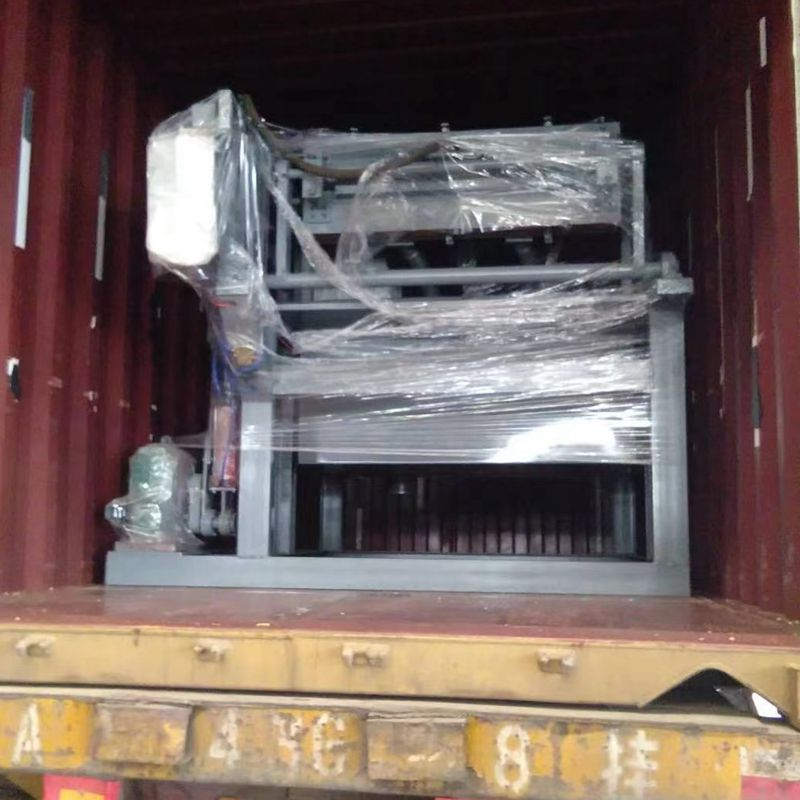Innovative Egg Tray Production Equipment for Efficient and Sustainable Manufacturing Solutions
Aug . 14, 2024 11:24 Back to list
Innovative Egg Tray Production Equipment for Efficient and Sustainable Manufacturing Solutions
The Advancements of Automatic Egg Tray Machine Technology
In recent years, the poultry industry has witnessed significant technological advances, among which the automatic egg tray machine has become a key player. This innovative machine plays a vital role in the packaging and transportation of eggs, ensuring they remain safe and undamaged, while also improving overall efficiency in production.
The primary function of an automatic egg tray machine is to produce high-quality egg trays that can effectively protect eggs during handling and shipping. These trays are designed to hold eggs securely, preventing them from rolling or breaking. The demand for such trays has been on the rise due to the growing global need for egg products, both for local consumption and for export.
Operational Efficiency
Automatic egg tray machines are engineered to optimize production processes. Unlike their manual counterparts, automatic machines require less labor and can operate continuously, significantly reducing production time. This increased efficiency not only meets the growing demand for eggs but also translates to lower operational costs. With automation, the risk of human error is minimized, leading to a more consistent product quality.
Most modern machines utilize advanced technologies like computer numerical control (CNC) systems, enabling precise manufacturing of egg trays. Moreover, these machines often come with multiple molds, allowing manufacturers to produce different types and sizes of trays as needed. This versatility is crucial for businesses aiming to cater to diverse market requirements.
Environmental Considerations
automatic egg tray machine

Another significant advantage of automatic egg tray machines lies in their ability to utilize recycled materials. Many machines are designed to manufacture trays from waste paper byproducts, which not only reduces the reliance on plastic but also contributes to environmental sustainability. This aligns with the global push towards greener practices in agriculture and manufacturing.
The process of converting waste paper into egg trays typically involves pulping, molding, drying, and pressing. Automatic machines streamline this process, enabling recyclers and manufacturers to produce eco-friendly trays efficiently. By choosing automatic machines that promote the use of recycled materials, businesses can enhance their reputation as environmentally conscious operators, appealing to a broader customer base.
Customization and Innovation
With the continuous advancements in technology, modern automatic egg tray machines can be customized to meet specific production needs. Manufacturers can modify machine settings to adjust the shape, size, and texture of the trays produced. This flexibility allows for innovations, such as designing trays for specialty eggs or organic products, further enhancing marketability.
Additionally, many automatic egg tray machines now come equipped with smart technology features, such as Internet of Things (IoT) connectivity. This enables real-time monitoring and analytics, allowing operators to track production efficiency, diagnose maintenance needs, and ensure optimal performance. Such innovations are paving the way for smarter manufacturing practices within the poultry sector.
Conclusion
The automatic egg tray machine represents a significant leap forward in the poultry industry's operational capabilities. By enhancing efficiency, promoting sustainability, and allowing for customization, these machines are not only meeting the needs of today's market but are also paving the way for a more innovative and environmentally-friendly future. As the demand for eggs continues to grow, the automatic egg tray machine will undoubtedly remain an essential asset for producers aiming to stay competitive in the industry.
-
High Performance Exhaust Fan – Efficient Ventilation Solutions for Home
NewsJun.10,2025
-
High-Quality Gestation Pen for Sows Durable Mobile Pig Pen & Simple Pig Pen Solutions
NewsJun.10,2025
-
High Quality Rabbit Cage Double Tier Designs & Welded Wire Mesh Supplier
NewsJun.10,2025
-
Floating Fish Feed Machine - High Efficiency Floating Fish Feed Extruder for Small Scale Production
NewsJun.10,2025
-
Premium Poultry Housing Solutions Mobile & Commercial Free Range Options
NewsJun.10,2025
-
Industrial FRP Fans Corrosion-Resistant Blades & Centrifugal Systems
NewsJun.09,2025






